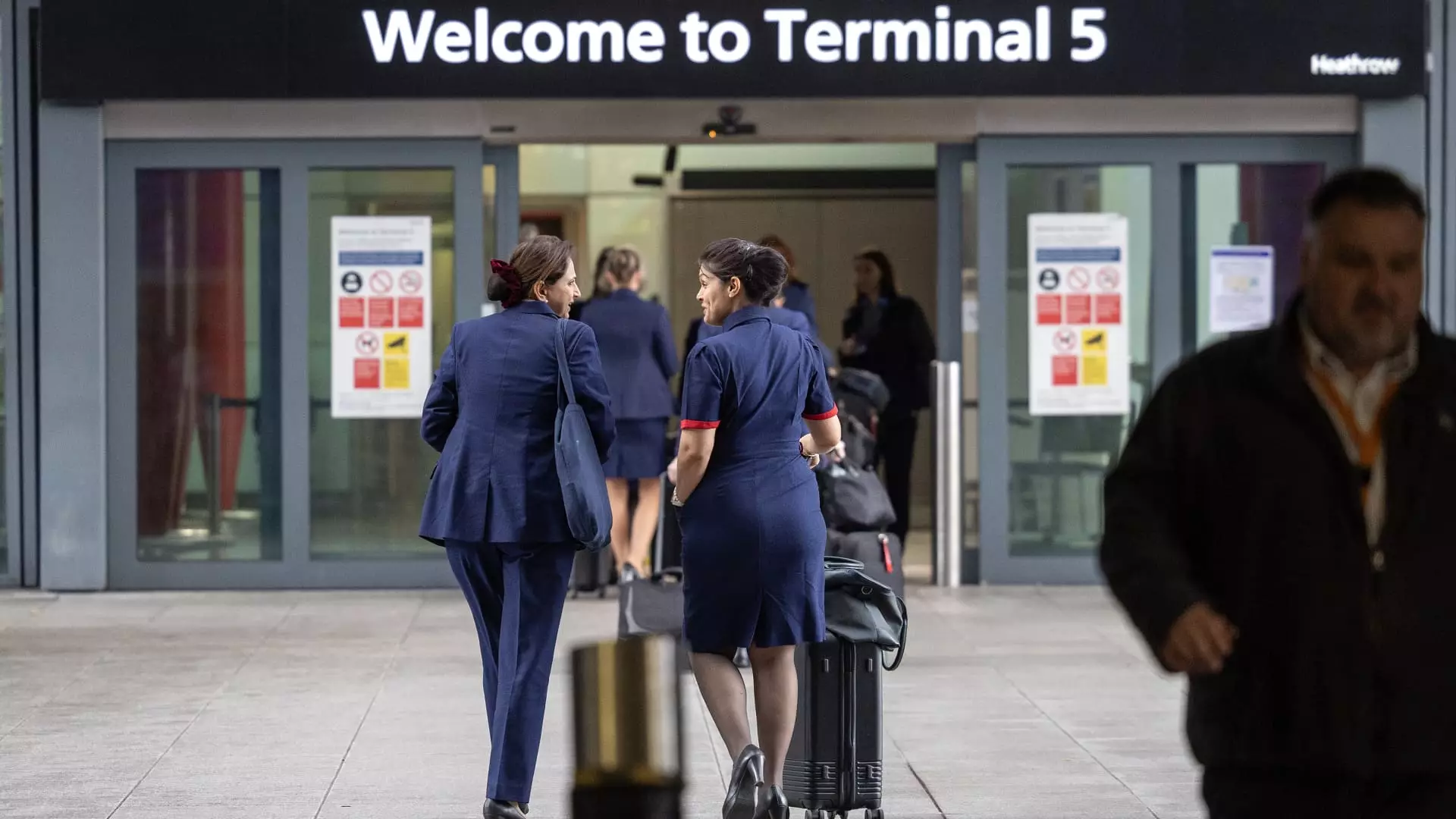The sudden power outage that crippled London’s Heathrow Airport serves as a glaring reminder of how vulnerable critical infrastructures are to seemingly mundane issues. With over 800 flights grounded and thousands of passengers stranded, one must consider not only the immediate chaos but also the systemic flaws that allowed such a situation to escalate. It forces one to ponder: how does a modern airport, heralded as Europe’s busiest, find itself at the mercy of a single electrical substation? Circular excuses from the authorities simply don’t cut it any longer.
The Aftermath: Disorganized Recovery Efforts
As operations resume at Heathrow, it’s apparent that “normalcy” is far from being achieved. British Airways, one of the worst affected airlines, has publicly acknowledged the complexities involved in restoring flight schedules. Sure, they’re aiming for around 85% of flights to run as scheduled, but the question remains—how effectively can they handle such a mess? The chaos comes at a time when passengers are increasingly demanding accountability and transparency. The airline industry is notoriously opaque, often prioritizing profits over customer welfare, and in this case, the gap between what passengers expect and what they receive has never been more evident.
It isn’t just British Airways struggling to recover; the operational difficulties faced by airlines, combined with the psychological toll on travelers, leads to a catastrophe in public sentiment. People who anticipated smooth travels are now caught in a haze of confusion with many forced to navigate a convoluted rebooking process.
Power Play: Who’s to Blame?
Willie Walsh, former CEO of British Airways and now head of the International Air Transport Association (IATA), didn’t hold back when criticizing Heathrow’s “total planning failure.” This is not merely an oversight; it represents a longstanding neglect of contingency planning. How is it even possible for such an essential infrastructure to be so fragile? Walsh’s call for a more equitable distribution of passenger care costs, rather than letting airlines shoulder the financial burden alone, reflects a growing frustration within the industry. This is a call for a paradigm shift in how we view infrastructure resilience.
When even the emergency services are pointing the finger, it raises questions about accountability at various levels. London’s Metropolitan Police have rightly initiated investigations, but the narrative here extends beyond just law enforcement. There’s a pressing need for a reevaluation of the priority given to contingency measures in critical infrastructure sectors.
Public Outrage and Imperative Scrutiny
The general public isn’t shy about voicing their disapproval. Social media platforms have flooded with angry passengers detailing their experiences. From lost luggage to unfulfilled connections, the human cost can be measured in more than just monetary loss. With every negative experience shared online, the reputation of both airlines and airports takes another knock. It’s an era where customer loyalty is increasingly fragile; unless airlines and the airport take collective responsibility, that loyalty may shift quickly like the winds of Heathrow itself.
The narrative around this incident takes on a broader societal tone as well—one that challenges us to reconsider our complacency. How often do we take critical infrastructure for granted? This situation shines a light on the fragility of our modern conveniences, pushing us to question if we’re ready for the consequences when those conveniences fail us.
A Moment for Reform
What we witnessed at Heathrow should serve as a catalyst for needed reform. The focus should not only be on rectifying immediate issues but also on fortifying the infrastructure’s resilience. By allowing governmental oversight, private companies, and public opinion to intertwine, we might foster an environment where safety is prioritised, and consumers feel protected.
As we navigate through a world riddled with uncertainties, instabilities will crop up. However, it’s how we respond to these challenges—how we learn, adapt, and reform—that will define us in the long run. Ending the cycle of complacency might be the first step towards a better, more resilient future for our transportation systems and beyond.


Leave a Reply